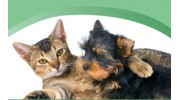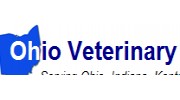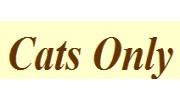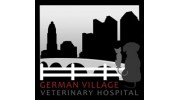Bone Joint Spine Clinic
Veterinarians in Columbus, OH
 If your veterinarian has referred your pet for an orthopedic evaluation, here is some information that may aid you. The role of the orthopedist today is to determine the cause of lameness, whether it is related to bones, joints or the spine, and to provide advice for its treatment. Solutions may require medication, splints, exercise modification or surgery. Surgery is not always needed, but if it is, be confident that with recent advancements, it is usually effective and safe.
If your veterinarian has referred your pet for an orthopedic evaluation, here is some information that may aid you. The role of the orthopedist today is to determine the cause of lameness, whether it is related to bones, joints or the spine, and to provide advice for its treatment. Solutions may require medication, splints, exercise modification or surgery. Surgery is not always needed, but if it is, be confident that with recent advancements, it is usually effective and safe.
Contact Details
From Website
Bone Joint Spine Clinic
read moreDr. Harrison is a board certified specialist in veterinary orthopedic surgery, for dogs and cats. Services offered are knee reconstruction, ligament repair, patellar (knee cap) stabilization, fracture treatment, spinal surgery, joint surgery, total hip replacement, bone disease diagnosis, lameness examinations and others. At our clinic, we take pride in providing your pets with safe and effective surgery. We love pets and treat all of our patients as if they were our own. The role of the orthopedist today is to determine the cause of lameness and to offer advice for its treatment.
About Us
read moreToday, orthopedic and spinal surgery have become sophisticated, thus post-operative care is minimal. It is rare to have post-operative complications, yet most people have high anxiety when their pets have major surgery. Here are a few considerations that may comfort you and facilitate post-operative care. You play a role in the success of pet's surgery. One of the most important instructions is to follow the activity restriction guidelines. This means restriction to a leash if your pet is outside.
Veterinary Orthopedic Surgery for
read moreIf your primary care veterinarian is referring you to Dr. Harrison for further investigation into your pet's orthopedic or lameness problem. To avoid duplication of work and expense, please bring radiographs and a copy of any diagnostic tests which may have been done. Since you will return to your primary care veterinarian, after the investigation of this problem, Dr. Harrison will send your veterinarian a letter detailing any veterinary surgery that will be done so that your pet's records may be kept up to date.
Veterinary Orthopedic Surgery for
read moreIf you are having trouble downloading the form, you can call our offices and we will send you a copy.
Veterinary Orthopedic Surgery for
read moreOnce an orthopedic surgery appointment has been made, there are two things to do. First, obtain copies of any radiographs, labwork or previous treatments from your primary care veterinarian. It is not a problem if these are unavailable, but bring what you have. This will reduce duplication of effort and expense. Second, withhold food after midnight the evening before the consultation. Water and prescription medications are to be given routinely. Thus, if surgery is done following the consultation, anesthesia will be safer.
Veterinary Orthopedic Surgery for
read moreAll veterinary consultations are free of charge. There is a charge for taking X-rays should they be needed. During the consultation, Dr. Harrison will examine your pet, give you his impression of your pet's orthopedic condition and make a recommendation to you. If that recommendation involves orthopedic surgery or additional services, he will discuss the associated fees with you at that time. You have no obligation to accept his recommendation or to have surgery done by Dr. Harrison. If you desire a second opinion, Dr. Harrison will give the names of other orthopedic surgeons in the area.
Veterinary Orthopedic Surgery for
read moreGeneral anesthesia begins in the preparation room with an intravenous injection of medication and/or inhalation of anesthetic gasses. The anesthetic state is maintained by a combination of inhalation gases which are dosed as needed. Commonly, a breathing tube (endotracheal tube) is inserted into the windpipe through the mouth after your pet is asleep. Inhalation anesthetics are delivered through this tube. Sometimes the anesthetics are delivered through a special facemask. Once surgery is complete, the anesthetic gases are discontinued and a return to the awakened state occurs shortly thereafter.



